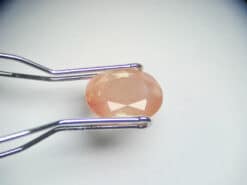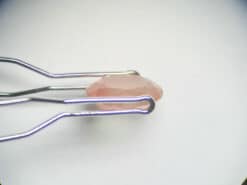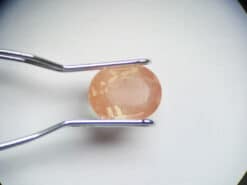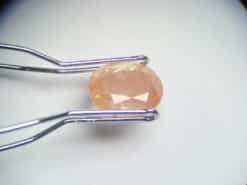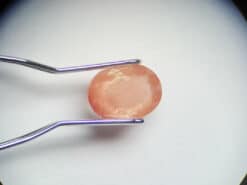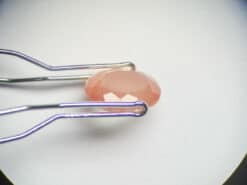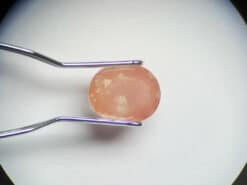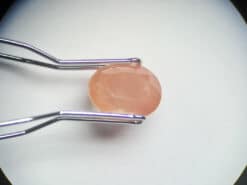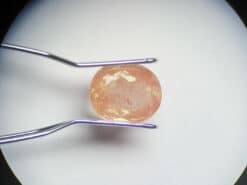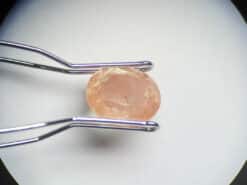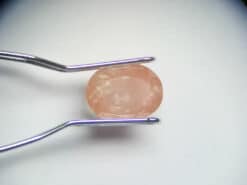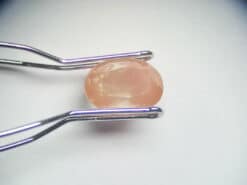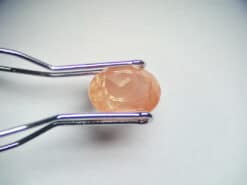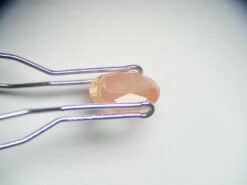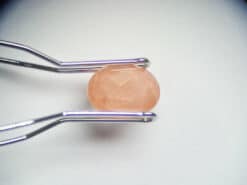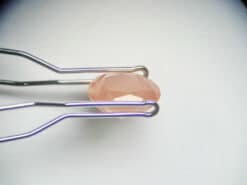Andesine
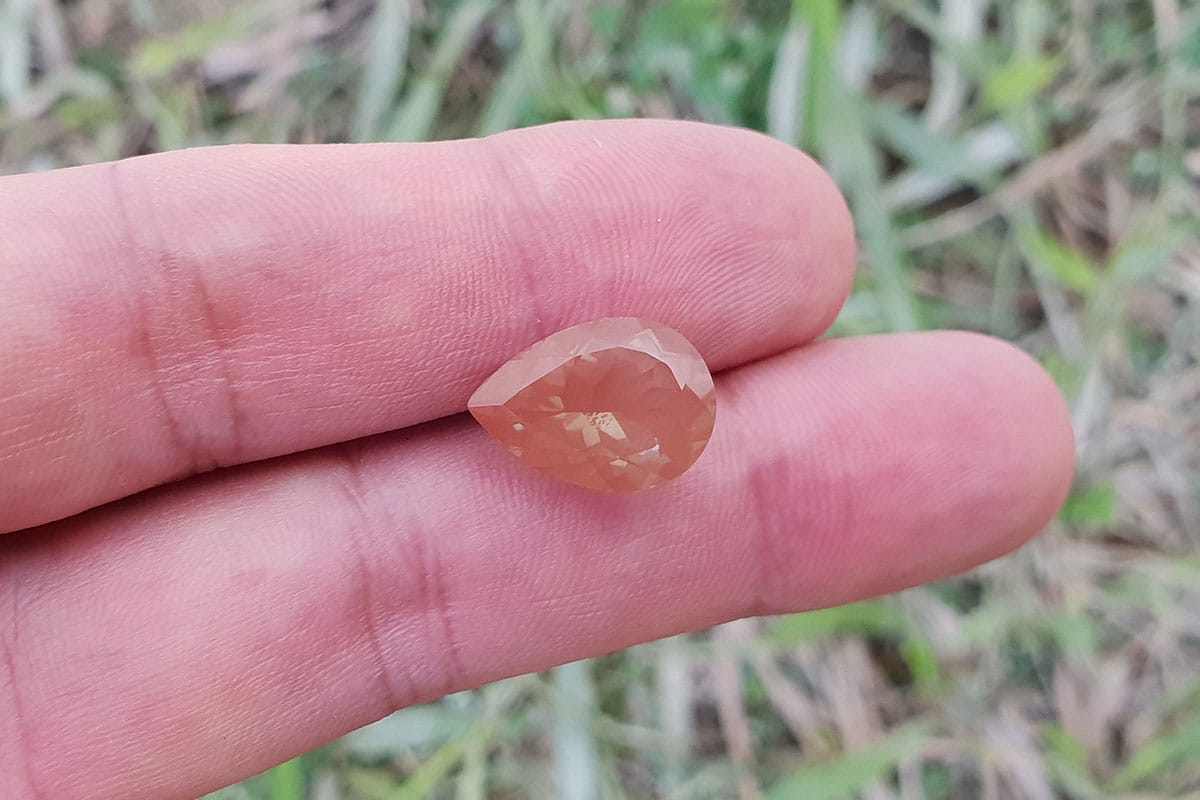
Andesine is a silicate mineral. A member of the plagioclase feldspar solid solution series.
Buy natural andesine in our shop
Andesine stone
Chemical formula is (Ca, Na)(Al, Si)4O8, where Ca/(Ca + Na). Anorthite is between 30% to 50%. The formula is Na0.7-0.5Ca0.3-0.5Al1.3-1.5Si2.7-2.5O8.
The plagioclase feldspars are a continuous solid solution series. It also as such the accurate identification of individual members requires detailed optical study, chemical analysis or density measurements. Refractive indices and also specific gravity increase directly with calcium content.
The stone was first described in 1841. It was for an occurrence in the Marmato mine, Marmato, Cauca, Chocó Department, Colombia. The name comes from the Andes. Due to its abundance in the andesite lavas in those mountains.
In the early 2000s, red and also green gemstones began to be marketed under the name of andesine. After some controversy, these gemstones were subsequently discovered to have been artificially-colored.
Andesine occurs in intermediate igneous rocks such as diorite, also syenite and andesite. It characteristically occurs in metamorphic rocks of granulite to amphibolite facies. The gemstone commonly exhibits texture. It also occurs as detrital grains in sedimentary rocks. We found it commonly with quartz, also potassium feldspar, biotite, hornblende and magnetite.
Andesine labradorite plagioclase
Plagioclase is a series of tectosilicate, framework silicate, minerals within the feldspar group. Rather than referring to a particular mineral with a specific chemical composition. Plagioclase is a continuous solid solution series. It is more properly known as the plagioclase feldspar series.
The name comes from the Ancient Greek for oblique fracture. In reference to its two cleavage angles. Plagioclase is a major constituent mineral in the Earth’s crust. It is consequently an important diagnostic tool in petrology. For the composition, origin and evolution of igneous rocks identification.
Plagioclase is also a major constituent of rock in the highlands of the Earth’s moon. Analysis of thermal emission spectra from the surface of Mars suggests that plagioclase is the most abundant mineral in the crust of Mars.
Andesine gemstone meaning and healing metaphysical properties benefits
The following section is pseudo scientific and based on cultural beliefs.
It is associated with the heart chakra and is used to dispel negativity while providing clarity to one’s thoughts. According to metaphysical beliefs, the stone is also a grounding stone that can help ease stress.
Andesine gem chakra
The crystal is associated with the heart chakra and is used to dispel negativity while providing clarity to one’s thoughts. According to metaphysical beliefs, The crystal is also a grounding stone that can help ease stress. There are no zodiac signs tied to andesine.
FAQ
What is andesine used for?
It is associated with the heart chakra and is used to dispel negativity while providing clarity to one’s thoughts. According to metaphysical beliefs, andesine is also a grounding stone that can help ease stress.
Is red andesine rare?
The stone is a rare variety of plagioclase feldspar which is extremely rare in gem grade pieces with orange or red colors. The new material has been the subject of widespread concerns about its geographic origin and natural color.
Is green andesine rare?
When it comes to green and color change, these are incredibly rare and beautiful gems also.
What is andesine worth?
Genuine stone of facetable quality is very rare, and priced accordingly up to $1,700 per carat for the best examples. Fine-quality, facetable, transparent labradorites in a dramatic currant red or a rich pine green are sporadically available.
Can you put labradorite in water?
The stone is slightly water sensitive and its beautiful shine and lustre can disintergrate if submerged in water for a long time. The gem is fine with a quick rinse in running water, i.e rain or a waterfall but when left for any time in a pool, it will deteriorate.

